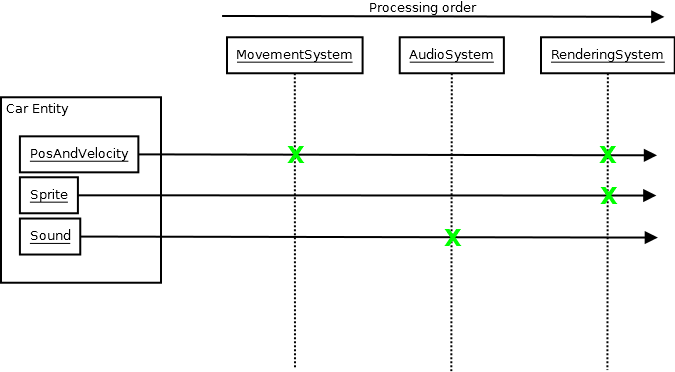I tried to make the question title as generally applicable as possible, but I'm not certain I worded it so well. It was brought about by a very specific problem I'm having, and for the remainder of this question I'll just try to describe that.
I'm attempting to write a small game engine with graphics, physics, and collisions*. I am trying to implement each of these things separately; it is perfectly conceivable that I have a graphically displayed, physically moving object that can't collide (fire effects?) or a collision object that isn't rendered or governed by physics (invisible barrier). However, a large number of objects will need all three.
I'm pretty darn sure that I can isolate the three pieces almost completely in their own classes, with the one exception that they all need to reference the same position and angular orientation of their object.
Initially, I thought that I'd put each thing into its own class and just build each actual game object with multiple inheritance, but in light of the fact that they all need to share data I wasn't so sure that that would work.
Next option was having each object initialized with pointers to the appropriate position and orientation data, but I felt weird treating those like special members . . . I would like each class to act as ignorant as possible of the others, and I would never do the pointers if I were designing each class independently.
I could also let each class live with its own position data and have the combination class (via either friendship or getters/setters) force them all to coincide, but that also just didn't feel right.
I tried searching Google for information on what's typically done, but most everything I found was focussed on a specific part of the system and didn't say a lot about integrating everything. Am I just being too philosophical, or is there a better way to do this?
If it's important, I'm using C++.
Thanks.
* I know that implementing it myself is pointless, but it's all just for fun.

